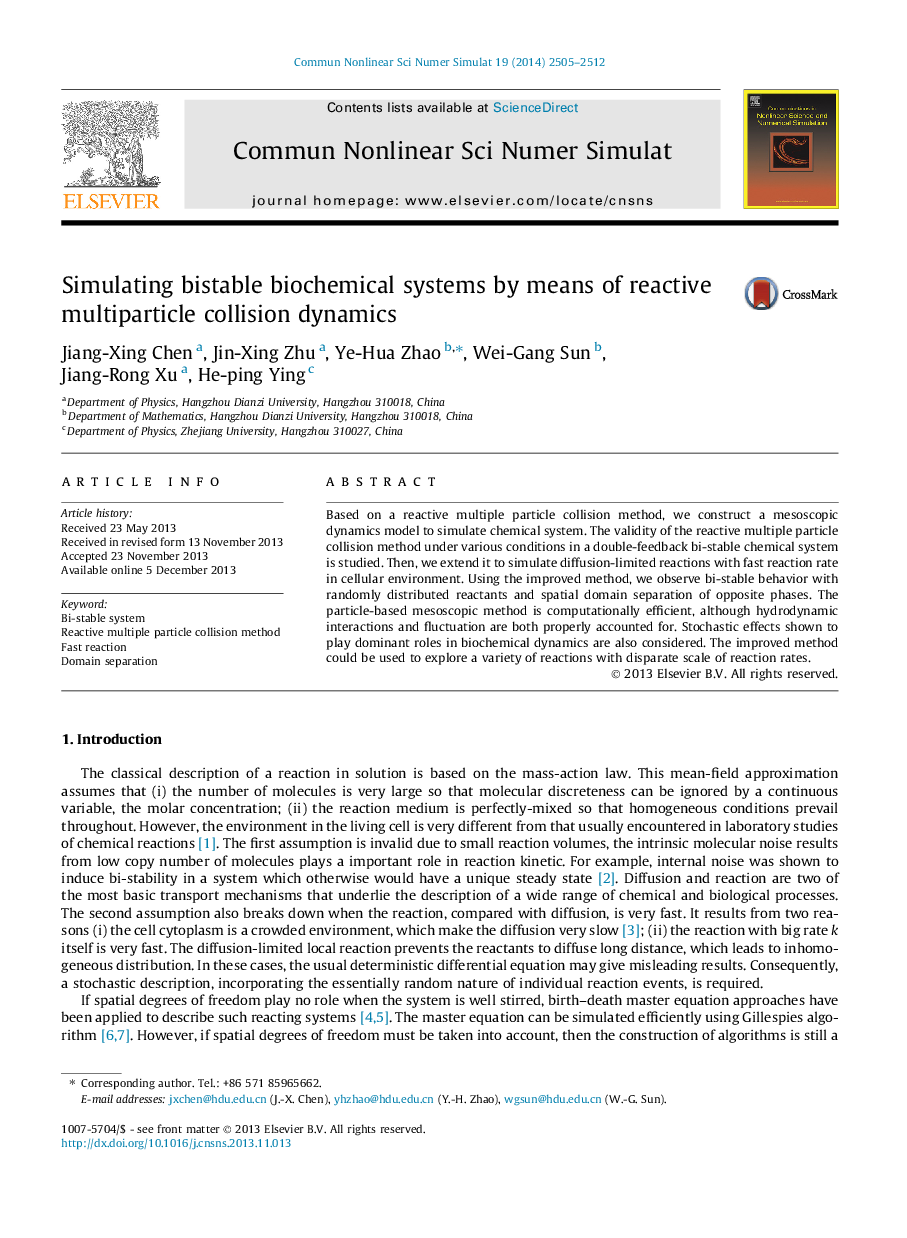| Article ID | Journal | Published Year | Pages | File Type |
|---|---|---|---|---|
| 755766 | Communications in Nonlinear Science and Numerical Simulation | 2014 | 8 Pages |
•A particle-based mesoscopic method is applied to model fast biochemical reaction in dilute cell environment.•Bi-stable behavior and spatial domains of opposite phases in reaction network which is based on double-negative feedback principle are simulated and presented.•The improved method could be used to explore a variety of reactions with disparate scale of reaction rates.
Based on a reactive multiple particle collision method, we construct a mesoscopic dynamics model to simulate chemical system. The validity of the reactive multiple particle collision method under various conditions in a double-feedback bi-stable chemical system is studied. Then, we extend it to simulate diffusion-limited reactions with fast reaction rate in cellular environment. Using the improved method, we observe bi-stable behavior with randomly distributed reactants and spatial domain separation of opposite phases. The particle-based mesoscopic method is computationally efficient, although hydrodynamic interactions and fluctuation are both properly accounted for. Stochastic effects shown to play dominant roles in biochemical dynamics are also considered. The improved method could be used to explore a variety of reactions with disparate scale of reaction rates.
